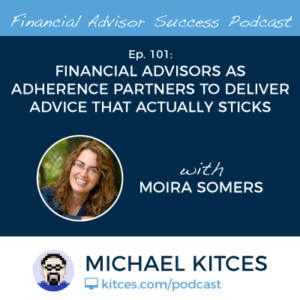For many individuals, their 401(k) makes up the bulk of their retirement savings, yet with an average of just over 10 job changes through one’s career, it’s not uncommon for people to have multiple (potentially expensive and restrictive) employer-sponsored retirement plans. Which means that transferring money out of various retirement plans into an IRA can be tremendously beneficial on many fronts, including lower costs and complexity, as well as increased investment options.
As we approach the end of the year, a common question on clients’ minds is whether or not they should consider rolling over money from their retirement plan into an IRA, and in this week’s #OfficeHours with @MichaelKitces, my weekly broadcast via Periscope and guest hosted this week by Jeff Levine, we discuss the benefits such a move, some of the potential pitfalls you might encounter along the way, and a few rules to keep in mind when making a rollover near the end of the year.
In order to understand the available options, it’s important to first understand the reasons for not rolling money between retirement accounts in the first place. For instance, clients who completed a Roth conversion earlier in the year that included after-tax dollars but still have pre-tax dollars in the traditional IRA would see their year-end balances impacted, making their prior conversion a lot less tax-efficient. Meanwhile, if a client wants to preserve and utilize a “still working” exception in order to delay RMDs from their employer-sponsored plans, then that option will be lost when rolling money into an IRA.
With that in mind, what are some good reasons to complete a rollover into the end of the year? First and foremost is convenience and ease. Because consolidating retirement accounts can reduce the complexity of keeping track of multiple accounts. This is particularly pertinent for individuals over 70 ½ who are subject to RMDs, since it doesn’t matter which IRA their RMDs are taken from as long as the total (and correct amount) is distributed, whereas RMDs must be taken from each employer-sponsored retirement plan account.
Meanwhile, clients who are interested in a making a qualified charitable distribution (where individuals can reduce their taxable income by using their RMD to contribute money to a charity), that QCD can only come from an IRA. Which, in turn, is based on the year-end balance in that IRA, meaning that there has to be money in the IRA in the first place! In a similar vein, clients who might want to purchase a qualified longevity annuity contract may not have that as an option in their employer-sponsored retirement accounts. Instead, a QLAC is more commonly purchased inside an IRA, but again, is subject to certain limitations that can be addressed by completing a year-end rollover.
Additionally, for clients over 70 ½ with a spouse that is at least 10 years their junior, rolling money into an IRA or other retirement account where that spouse is the sole beneficiary before year-end will lower the RMD from that IRA in the following year. And finally, rolling money from a 401(k) into a Roth IRA can be an effective means of reducing RMDs in the future, and is especially attractive at this time due to the lower tax rates (temporarily?) in effect following the passage of the Tax Cuts and Jobs Act.
Although there are some rules to keep in mind when taking advantage of these year-end planning opportunities at the end of the year, they aren’t terribly complex. Specifically, any money that leaves one account must be out before December 31st, but beyond the common timeframes for rollovers, it’s okay if the money doesn’t transfer into the receiving account until after January 1st. One thing that’s important to keep in mind for clients subject to RMDs, however, is that the custodian likely will not track that last minute change, and it will be up to the advisor to make sure to account for any year-end balance increases for the following year’s RMD.
Ultimately, the key point is to avoid completing any sort of rollover if it is not tax-efficient, but there are some good reasons to move money between tax-favored retirement accounts, particularly towards the end of the year, as well as opportunities for advisors to add value for their clients by helping them manage their tax exposure, particularly for those clients fortunate enough to not rely on distributions from their retirement account for income in retirement!

 Welcome back to the 102nd episode of Financial Advisor Success Podcast!
Welcome back to the 102nd episode of Financial Advisor Success Podcast! Welcome back to the 101st episode of Financial Advisor Success Podcast!
Welcome back to the 101st episode of Financial Advisor Success Podcast!
